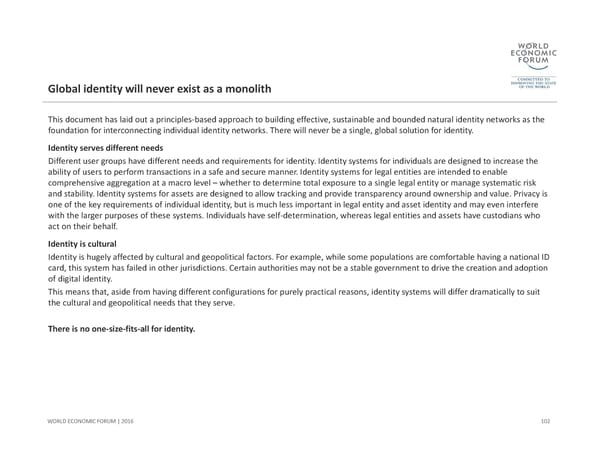Global identity will never exist as a monolithThis document has laid out a principles‐based approach to building effective, sustainable and bounded natural identity networks as the foundation for interconnecting individual identity networks. There will never be a single, global solution for identity. Identity serves different needs Different user groups have different needs and requirements for identity. Identity systems for individuals are designed to increase the ability of users to perform transactions in a safe and secure manner. Identity systems for legal entities are intended to enable comprehensive aggregation at a macro level –whether to determine total exposure to a single legal entity or manage systematic risk and stability. Identity systems for assets are designed to allow tracking and provide transparency around ownership and value. Privacy is one of the key requirements of individual identity, but is much less important in legal entity and asset identity and may even interfere with the larger purposes of these systems. Individuals have self ‐determination, whereas legal entities and assets have custodians who act on their behalf. Identity is cultural Identity is hugely affected by cultural and geopolitical factors. For example, while some populations are comfortable having a national ID card, this system has failed in other jurisdictions. Certain authorities may not be a stable government to drive the creation and adoption of digital identity. This means that, aside from having different configurations for purely practical reasons, identity systems will differ dramatically to suit the cultural and geopolitical needs that they serve. There is no one‐size‐fits‐all for identity. 102 WORLD ECONOMIC FORUM | 2016
 A Blueprint for Digital Identity Page 102 Page 104
A Blueprint for Digital Identity Page 102 Page 104